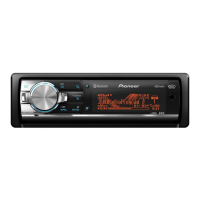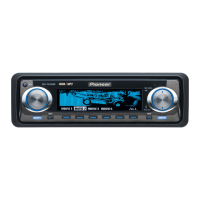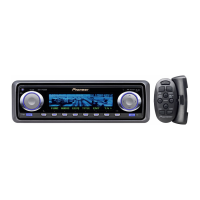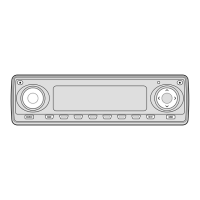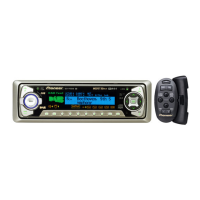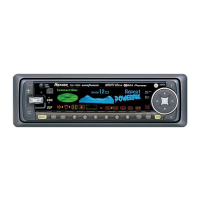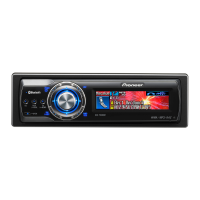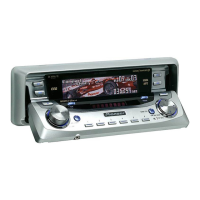Do you have a question about the Pioneer DEH-P945R and is the answer not in the manual?
Loading discs, selecting tracks, and adjusting volume on the CD player.
Identifying and resolving common error messages during CD playback.
How to select the multi-CD player as the audio source.
Selecting discs using numbered buttons on 6/12-disc systems.
Detailed explanation of one-track, disc, multi-CD, and all repeat modes.
How to enable and use random playback for multi-CDs.
How to enable and use scan playback for multi-CDs.
Setting up custom track playback sequences.
Playing back programmed track sequences.
Procedure for inputting custom titles for discs.
Searching and selecting discs using their stored titles.
Using the first letter of a title to find discs in 50-disc players.
Assigning discs to music groups for playback.
Playing only discs assigned to a specific music group.
Introduction to the PRO and STD modes of the DSP.
Instructions on how to switch between PRO and STD DSP modes.
Accessing the main menu for DSP functions.
Accessing the menu for fine-tuning DSP parameters.
How the function adjusts sound based on seating position.
Steps to select the optimal listening position.
Adjusting speaker timing for sound stage accuracy.
Dividing audio signal into frequency bands for speaker reproduction.
Key parameters like frequency band, level, and phase.
Using HPF and LPF to set frequency bands for speakers.
Tuning filter slope and speaker phase for sound continuity.
Fine-tuning the slope for speaker frequency response.
Adjusting phase for improved sound continuity.
Selecting the correct Network mode (Low-NW/Sub-W-NW).
Choosing filters for specific speaker units.
Setting crossover frequencies for selected speaker filters.
Adjusting the output level for individual speaker units.
Setting the slope for each speaker filter to ensure sound continuity.
Fine-tuning phase for optimal sound continuity between speakers.
How the system measures and compensates for car acoustics.
Critical safety warnings and precautions before starting auto-equalizing.
Factors affecting auto-equalization and necessary preliminary adjustments.
Selecting the seat position for the measurement microphone.
Adjusting Time Alignment and Network before PRO mode auto-equalizing.
Ensuring a quiet environment by turning off engine and accessories.
Correctly positioning the microphone for accurate acoustic measurement.
Plugging the microphone into the unit's input jack.
Initiating the acoustic measurement and compensation sequence.
Troubleshooting common error codes encountered during auto-equalizing.
Fine-tuning factory equalizer curves.
Adjusting user-defined equalizer curves.
Saving adjusted equalizer settings as user curves.
Selecting simulated acoustic environments like Studio or Concert Hall.
Adjusting left/right speaker balance in PRO mode.
Adjusting front/rear speaker balance in STD mode.
Compensating for low-volume frequency deficiencies.
Automatically adjusting volume based on ambient noise.
Preventing volume jumps when switching audio sources.
Accessing the menu for initial system configuration.
Enabling and configuring the Removable Front Panel Alert system.
| CD Playback | Yes |
|---|---|
| Radio Data System (RDS) | Yes |
| Preamp Voltage | 4V |
| Bluetooth | No |
| USB Input | No |
| High-Pass Filter | Yes |
| Low-Pass Filter | Yes |
| Subwoofer Control | Yes |
| Time Alignment | Yes |
| Remote Control | Yes |
| Tuner Type | AM/FM |
| AUX Input | Yes |


